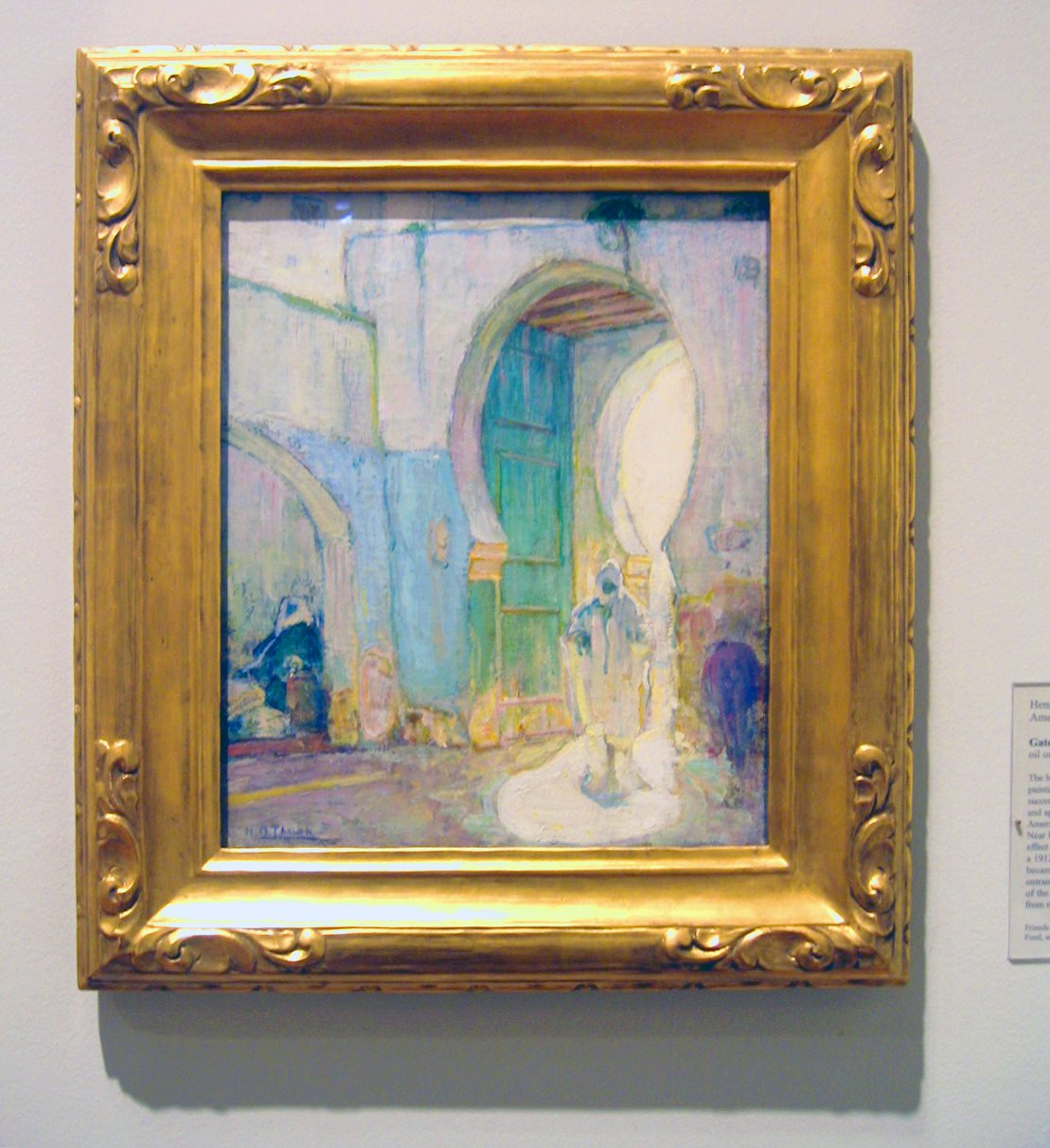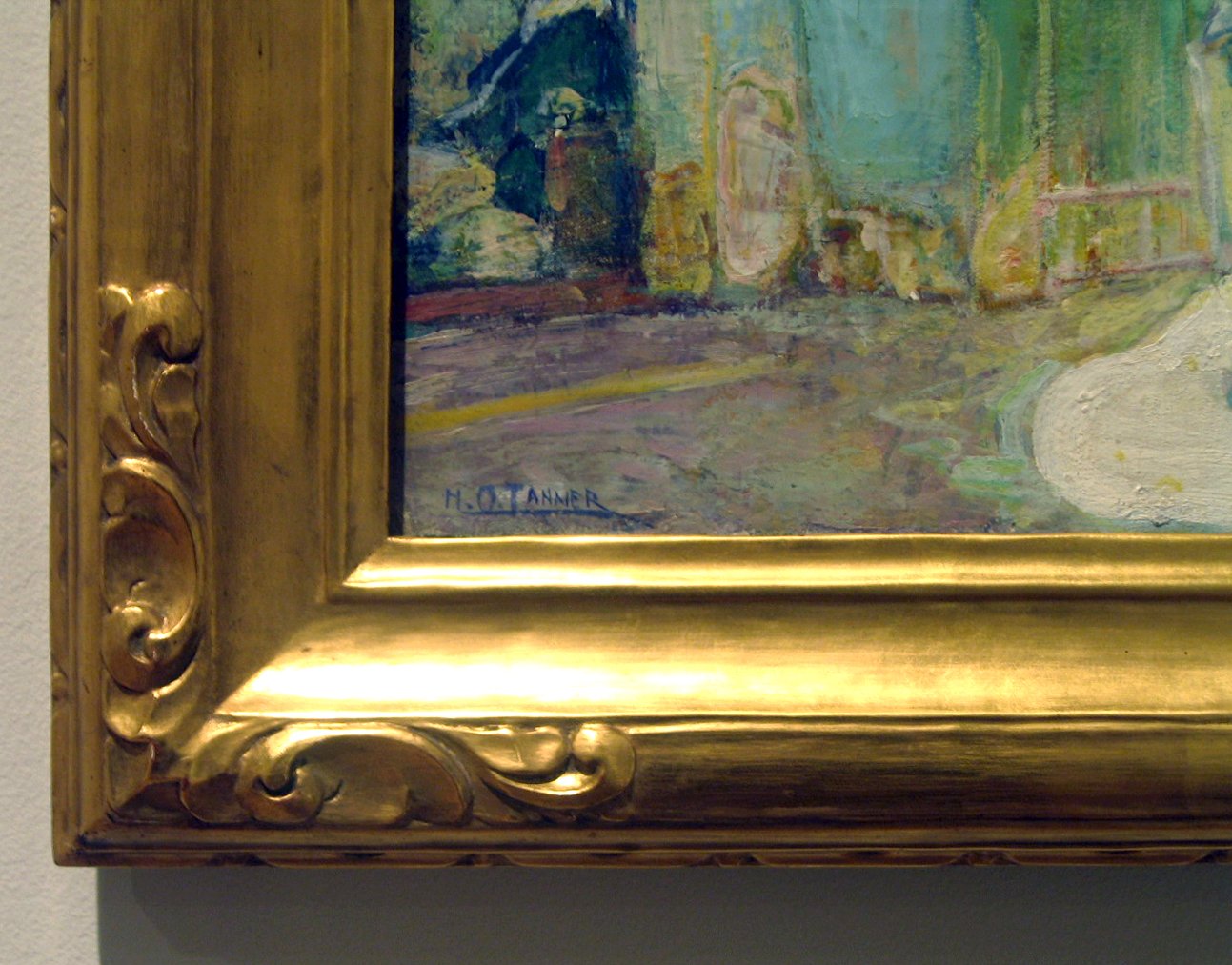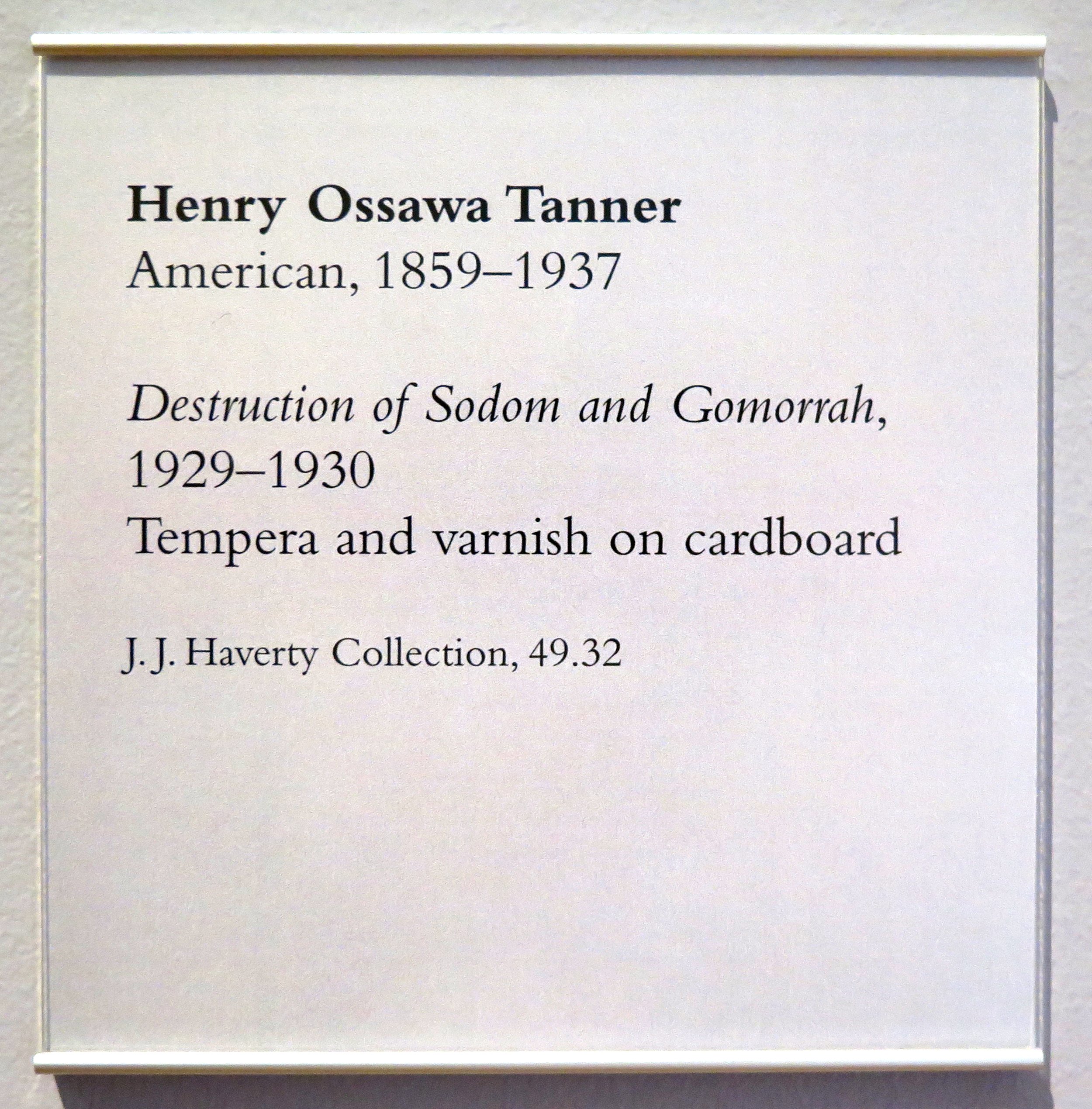HENRY OSSAWA TANNER
Please check this page again as we continue to update with more artists framed by Gill & Lagodich in both period and replica frames.
Gill & Lagodich have framed over a dozen paintings by Henry Ossawa Tanner for private collectors and museums. Projects include: The Thankful Poor, 1894, Art Bridges; The Young Sabot Maker, 1895, Nelson-Atkins Museum; Gateway, Tangier, c. 1912, Saint Louis Art Museum; A View of Fez, ca. 1912, High Museum; Étaples and The Canche River at Dusk…, about 1918, Hood Museum, Dartmouth; and Destruction of Sodom and Gomorrah, 1929–30, High Museum.
Paintings are shown chronologically.

The Thankful Poor, 1894, oil on canvas, 35-1/2 x 44-1/4 in. Framed by Gill & Lagodich for the Art Bridges Foundation: custom-made replica c. 1890s American frame, original to Henry Ossawa Tanner, Nicodemus (at Pennsylvania Academy of Fine Arts), stained and oxidized mahogany wood, applied custom-wood ripple ornament, molding width 6 in. “Quiet and domestic, the scene depicted in The Thankful Poor suggests a spiritual moment between a young boy and an elderly man. Artist Henry Ossawa Tanner, born to a religious family, often channeled this sense of piety in his paintings over the span of his career. Later recognized for his biblical paintings, Tanner first produced genre scenes of Black American life near the turn of the 20th century. The Thankful Poor is the last known of these works. The decision to depict Black daily life became clear to the artist during his studies between Paris and Philadelphia, where he was academically trained. While Black subjects appeared in the works of white American artists, such as Winslow Homer and Thomas Eakins, Tanner distinctly prioritized the humanity of his figures. In The Thankful Poor, the artist accomplishes this by transforming a moment of prayer into a complex exchange of intergenerational kinship. Spiritual values are often tied to familial relations and this focus speaks to Tanner’s personal experiences within the African Methodist Episcopal Church, of which his father was a pastor.” —Art Bridges museum label


HENRY OSSAWA TANNER (1859–1937)
The Young Sabot Maker, 1895, oil on canvas, 47-3/8" x 35-3/8", period American Barbizon frame, gilded applied and cast ornament on wood. Framed by Gill & Lagodich for The Nelson-Atkins Museum of Art. “Henry Ossawa Tanner's The Young Sabot Maker depicts a man and boy, likely a father and son, carving traditional (sabots) wooden shoes in Brittany, France. Such images of rural folk engaged in old customs were popular in the fast-changing world of the late 19th century. Tanner's painting also evokes Christian associations as, according to biblical tradition, carpentry was the trade of Joseph, Jesus' father. Fittingly, Tanner presented the painting as a gift to his mother and his father, Benjamin Tanner, who, for a time, served as bishop of the African Methodist Episcopal Church in Kansas City, Kansas.” —Museum Label. Painting Purchase: William Rockhill Nelson Trust through the George H. and Elizabeth O. Davis Fund and partial gift of an anonymous donor

HENRY OSSAWA TANNER (1859–1937)
A Jerusalem Type, ca. 1908, oil on canvas, 18-1/8 x 15-1/8 in. Framed by Gill & Lagodich for the Chrysler Museum of Art. Period c. 1920 American Arts and Crafts frame, Newcomb-Macklin, New York/Chicago makers, gilded hand-carved wood, reverse cassetta profile, molding width 3-1/2”

HENRY OSSAWA TANNER (1859–1937)
Gateway, Tangier, c. 1912, oil on canvas, 18-7/16 x 15-5/16 in. Framed by Gill & Lagodich for the Saint Louis Art Museum. Period American Arts and Crafts frame, Walfred Thulin, Boston maker, gilded hand-carved wood, hand-carved signature verso THULIN 1254 19W24. “The blue tones and loose brushwork of this painting typify Henry Ossawa Tanner's most successful experiments with color composition and application of paint. Tanner, an African American artist, traveled to the Mediterranean region four times, and these trips had a profound effect on his style and subject matter. During a 1912 trip to Tangier, Morocco, Tanner became fascinated with this gateway—the entrance to the casbah, or the historic city area and fortress—and he proceeded to paint the gateway from many perspectives and vantage points.” — museum didactic label. Painting credit: Friends Fund, Museum Minority Artists Purchase Fund, and the Judy Glick Fund.


HENRY OSSAWA TANNER (1859–1937)
A View of Fez, ca. 1912, oil on panel, 9 x 12-1/2 in. Framed by Gill & Lagodich for the High Museum. Period c. 1915-20 American Arts and Crafts frame, Newcomb-Macklin Co., New York / Chicago makers, metal-gilded hand-carved wood, molding width 2-1/2 in. Painting Credit Gift of Dr. Richard A. Long.


HENRY OSSAWA TANNER (1859–1937)
Destruction of Sodom and Gomorrah, 1929–30, tempera and varnish on cardboard, 20-3/8 x 36 inches. Period c. 1930–40s American frame, molding width 4-1/2 in. Framed by Gill & Lagodich for High Museum. “Famous for his biblical paintings, Henry Ossawa Tanner painted Destruction of Sodom and Gomorrah after two trips to Palestine. He used his favorite hue, the distinctive greenish-blue color dominating the sky, to portray the smoky conflagration engulfing the two cities. The painting’s abstraction and simplicity of form evoke a sense of interaction between the physical and spiritual worlds. Tanner downplays the presence of Lot and his daughters, barely visible at the lower right. His blend of tempera and oil unifies the composition and imparts an almost unearthly luminosity.” —museum didactic label Painting credit J. J. Haverty Collection




—High Museum label

